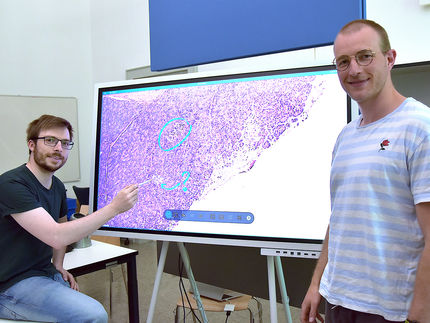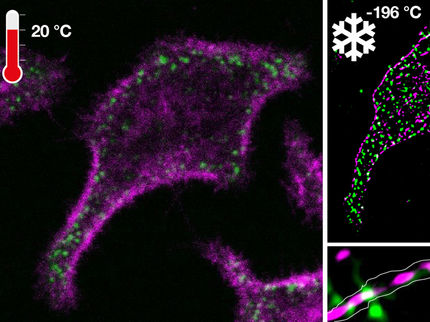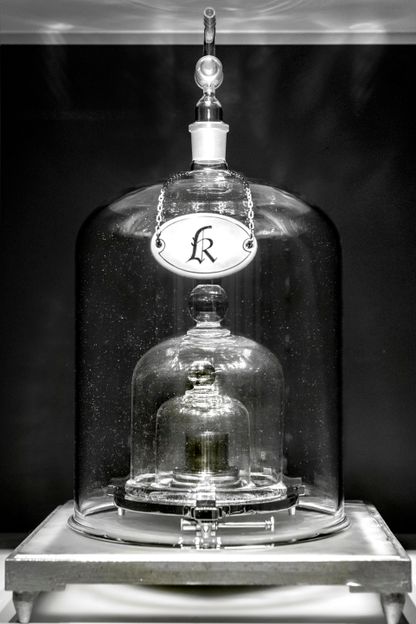Global guidelines to improve the quality of microscopy images in scientific publications
As part of a global initiative, researchers have drawn up guidelines for the publication of microscopy images in scientific outlets. The criteria, summarized in the form of checklists, form the basis for ensuring that published images in the field of life sciences and medicine are intelligible and reproducible. This is the only way to unlock their full potential for research. The results achieved by a group led by a scientist at NCT/UCC Dresden and University Medicine Dresden are likely to influence global publication practice regarding microscopy images. They were published in the Nature Methods journal.
More than a million scientific papers are published in the life sciences and medicine each year. Around a third of them include images, such as photos of cells or tissues. However, most of these images cannot be fully understood by the target audience, for example because scale information is missing. Moreover, many lack information about how exactly the images were produced, preventing other researchers from reproducing comparable images.
Now, as part of the global initiative on Quality Assessment and Reproducibility for Instruments and Images in Light Microscopy, a specialist working group has drawn up communication guidelines, particularly for microscopy images and image analysis data.
“Scientists around the world and leading scientific journals have signaled an urgent need for publication standards for microscopy images,” says Dr. Helena Jambor, the initiator of the working group responsible for the guidelines, who is also the last author of the scientific paper and works as a scientist at the National Center for Tumor Diseases Dresden (NCT/UCC) and at University Medicine Dresden. “These guidelines need to be drawn up by researchers because they know best which quality criteria are particularly important for their work. We have now succeeded in achieving a broad consensus, involving researchers from many of the world’s leading institutes in the life sciences.”
The main criteria are summarized in clear checklists to be followed when publishing microscopy images. They include, for instance, making sure that relevant image sections are selected, that color channels are named in fluorescence microscopy images, and that the colors chosen can be distinguished by readers who are color blind. Many publications also present results of image analyses. In these cases, it is important that authors describe precisely how the data were generated, for instance which software solutions and input commands were used, and that sample data are available to check the results. In general, images should be made available to the scientific community in suitable databases in such a way that they can be used for further research.
“The guidelines are aimed at all researchers who work with light microscopy, from beginners to experts,” says Dr. Christopher Schmied, the first author of the research paper, who works as a scientist at the Human Technopole Foundation in Milan and at the Leibniz-Forschungsinstitut für Molekulare Pharmakologie (FMP) in Berlin. “They enable the publication of images and image analysis results that meet high quality standards, are reproducible and therefore plausible, and provide a good basis for further research projects.”
Within the checklists, the criteria are split into three levels so that users can choose between minimal, recommended and ideal requirements for good image communication. “Our goal is for the criteria to be used by leading scientific journals as binding standards for publication,” says Dr. Jambor. “The chances of this are good. The members of the global initiative are constantly updating the checklists. And we will also be developing communication training materials and tutorials for microscopy images.”
“Microscopy images and image analyses are playing an increasingly important role for research, in part because of the technological advances in recent years,” says Prof. Michael Albrecht, Medical Director of University Hospital Dresden. “In order to be able to exploit this potential to the full, it is important to have uniform standards for publication. We are delighted that Dresden scientists are leading key efforts in this area.”
Original publication
Other news from the department science
Most read news
More news from our other portals
See the theme worlds for related content
Topic world Fluorescence microscopy
Fluorescence microscopy has revolutionized life sciences, biotechnology and pharmaceuticals. With its ability to visualize specific molecules and structures in cells and tissues through fluorescent markers, it offers unique insights at the molecular and cellular level. With its high sensitivity and resolution, fluorescence microscopy facilitates the understanding of complex biological processes and drives innovation in therapy and diagnostics.

Topic world Fluorescence microscopy
Fluorescence microscopy has revolutionized life sciences, biotechnology and pharmaceuticals. With its ability to visualize specific molecules and structures in cells and tissues through fluorescent markers, it offers unique insights at the molecular and cellular level. With its high sensitivity and resolution, fluorescence microscopy facilitates the understanding of complex biological processes and drives innovation in therapy and diagnostics.



























































